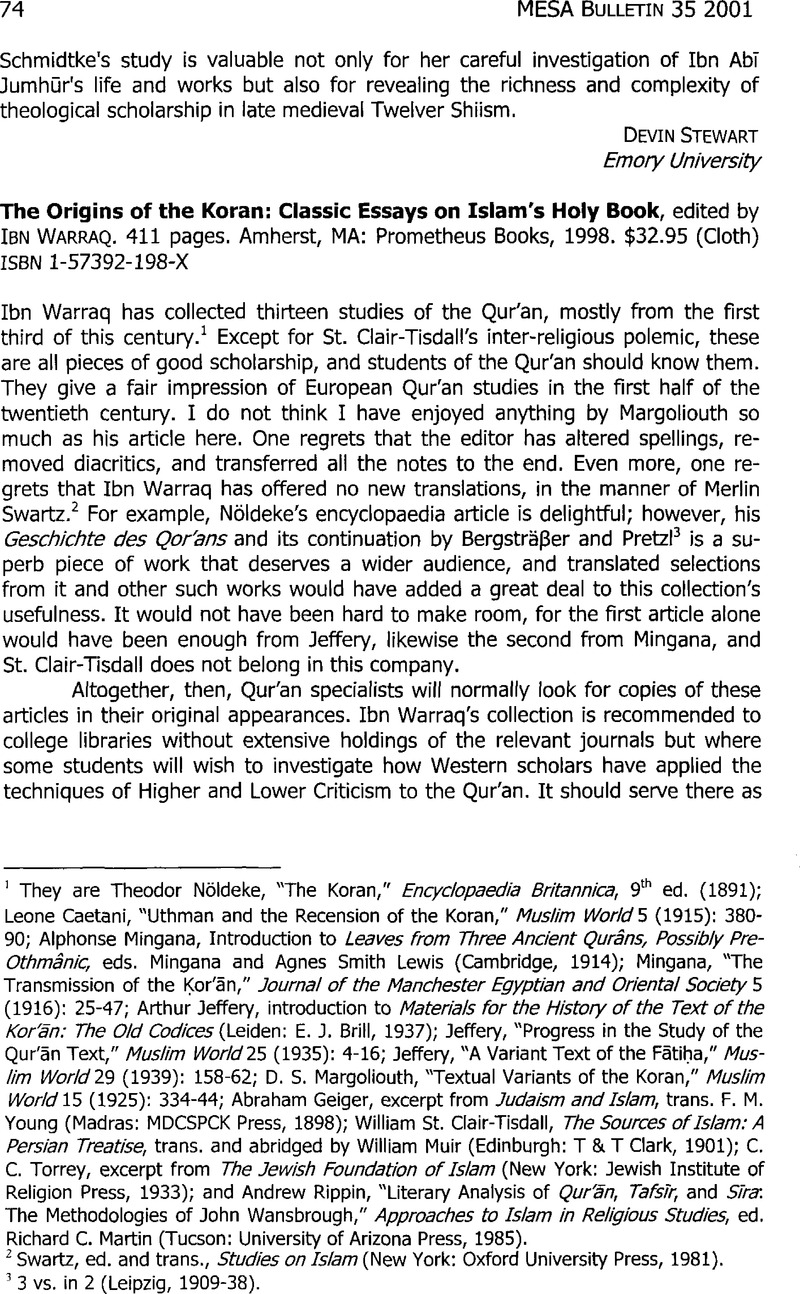No CrossRef data available.
Published online by Cambridge University Press: 09 March 2016

page 74 note 1 They are Theodor Nöldeke, “The Koran,” Encyclopaedia Britannica, 9th ed. (1891); Leone Caetani, “Uthman and the Recension of the Koran,” Muslim Worlds (1915): 380–90; Alphonse Mingana, Introduction to Leaves from Three Ancient Qurâns, Possibly Pre-Othmânic, eds. Mingana and Agnes Smith Lewis (Cambridge, 1914); Mingana, , “The Transmission of the Kor’an,” Journal of the Manchester Egyptian and Oriental Society 5 (1916): 25–47Google Scholar; Jeffery, Arthur, introduction to Materials for the History of the Text of the Kor’an: The Old Codices (Leiden: E. J. Brill, 1937)Google Scholar; Jeffery, “Progress in the Study of the Qur’an Text,” Muslim World25 (1935): 4-16; Jeffery, “A Variant Text of the Fãtiha,” Mus lim World’29 (1939): 158-62; D. S. Margoliouth, “Textual Variants of the Koran,” Muslim World’15 (1925): 334-44; Geiger, Abraham, excerpt from Judaism and Islam, trans. Young, F. M. (Madras: MDCSPCK Press, 1898)Google Scholar; Clair-Tisdall, William St., The Sources of Islam: A Persian Treatise, trans, and abridged by Muir, William (Edinburgh: T &T Clark, 1901)Google Scholar; Torrey, C. C., excerpt from The Jewish Foundation of Islam (New York: Jewish Institute of Religion Press, 1933)Google Scholar; and Andrew Rippin, “Literary Analysis of Qur’an, TafsTr, and Sirar. The Methodologies of Wansbrough, John,” Approaches to Islam in Religious Studies, ed. Martin, Richard C. (Tucson: University of Arizona Press, 1985).Google Scholar
page 74 note 2 Swartz, ed. and trans., Studies on Islam (New York: Oxford University Press, 1981).
page 74 note 3 3 vs. in 2 (Leipzig, 1909–38).
page 75 note 1 The Qur’ān: Formative Interpretation (Brookfield, VT: Variorum, 1999); and The Qur’ān: Style and Contents (forthcoming).